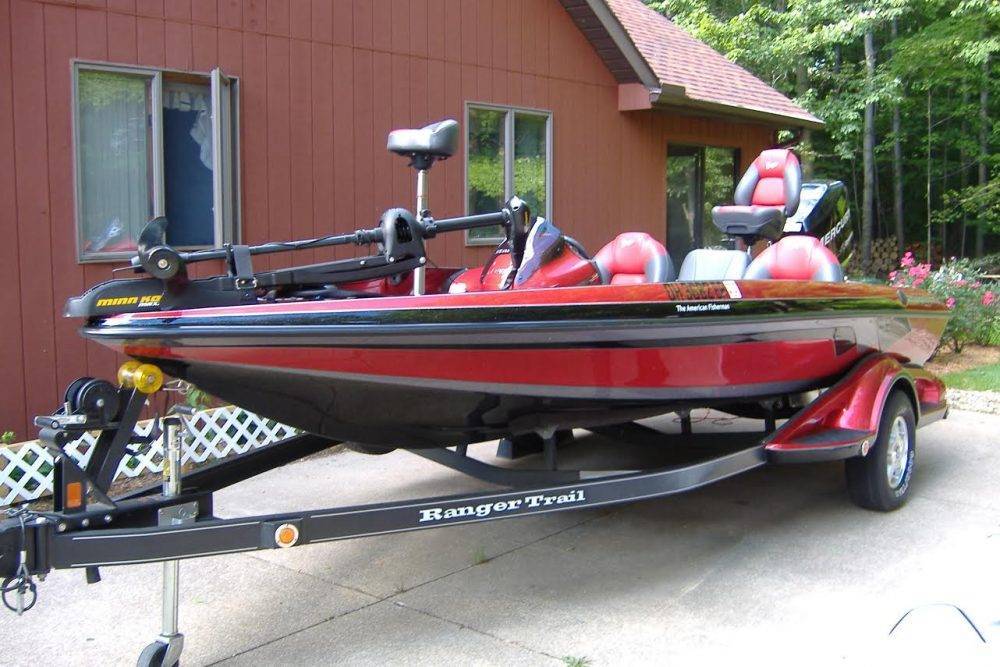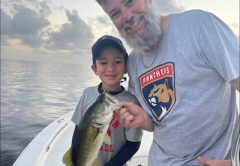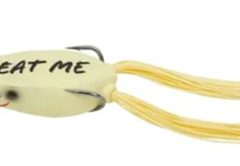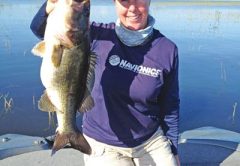Looking back to the late 60’s and early 70’s, it would have been hard to imagine the many changes that would come in the boating industry and the impact it would have on fishermen all over the country.
Growing up in northern Ohio, my earliest memories involved fishing out of a 16’ aluminum Sea Nymph with a 9 ½ Johnson outboard motor and a good set of oars. We often fished 3 in the boat, one guy on each end and one guy in the middle. The middle guy rowed and kept the boat moving until one of the others caught a bass, and then we’d change places. We thought we had a pretty good system. Little did we know the impact electric trolling motors would have on our future?
Although we generally fished the shoreline, my father was always curious about the water depth. Since modern day depth finders weren’t available, we carried a roll of white twine, marked every foot and tied to a lead sinker. It was reliable and easy to use.
When my father died in 1974, he left me his boat and it would be the first of at least a dozen fishing boats I would own over the next 40 years.
One of my early favorites was an 18’ Fisher Marine Water Strider with a 25 hp Evinrude motor along with an electric motor and livewell. With stick steering, I could sit in the front of the boat and run the steering with one hand and the throttle with the other. The electric motor folded onto the small front deck but was within easy access to the front seat. The livewell, a great new invention specifically for bass tournaments was directly behind the front seat. I loved this boat and although I would eventually move on to bigger and better boats, the Water Strider would always remain one of my favorites.
With the fishing public demanding bigger, faster boats, the boating industry stepped up and it wasn’t long before companies like Skeeter and Ranger began to take into consideration creature comforts like padded, fold down seats, aerated livewells, storage compartments for tackle and rods and casting decks or platforms to elevate the angler. Consoles with engine gauges, electric starters and eventually depth finders with GPS would become part of the modern day bass boat.
The boating industry was changing quickly to meet the needs of fishermen who were now engaged in fishing bass tournaments as well as pleasure fishing. Boats needed to be bigger, faster and better equipped.
Over the next 10-15 years, like many fishermen, I would buy and sell a number of boats. Each one bigger, faster and flashier than the one before. And I wasn’t alone. Marine dealers all over the country began selling bass boats at a faster clip than any other type of vessel.
Although Skeeter built the first “official” bass boat, Ranger Boats quickly assumed a high profile in the bass fishing industry by sponsoring the annual B.A.S.S. Championship Tournament held annually. They would remain the top rated bass boat for the next 40 years.
By the late 1970’s, Rangers began showing up in many of the tournaments that I fished all over the country and it wasn’t long before I had to have one.
Although I’ve owned a dozen or more boats, I’ve been “sold” on Rangers for the last 30 years. I bought my first Ranger, a used 18’ Comanche in the early 80’s, and since that time, I’ve owned five newer ones.
Used Ranger Bass Boats are known for holding their value and it was certainly true with each of the boats I owned. Keeping the boats garaged or covered can maintain that value, as well as having annual tune-ups and proper maintenance.
All of the Ranger’s I owned were used and it wasn’t until 2004 that I made the decision to buy a brand new one. Although I have to admit, the price, even in 2004 was more than twice the cost of my first house. Making the purchase was a little daunting.
But I took the plunge and bought the Forest Woods, 35th Anniversary Edition Ranger Comanche. It was the most beautiful boat I’d ever seen. And it was loaded! Every conceivable innovation had been added to this boat. I felt like I’d died and gone to heaven.
But as fate would have it, in late 2005 I closed my fishing tackle store and moved back to Ohio. I took the Ranger with me but living 20 miles from Lake Erie, I soon realized I needed a different boat to fish for walleyes and smallmouth bass. I traded it in and bought a 24’ Grady White Lake Erie boat and for the next few years spent my time catching walleye’s and small mouth bass.
In 2009, I decided to move back to Florida and so it only made sense to trade in the Grady White for another Ranger. If I was shocked in 2004 with the sticker price, I was amazed at how much the price had gone up in just 5 years.
The deciding factor for me ultimately came down to the size of my garage. Due to the homeowners association in Golf Hammock, boats cannot be parked in the driveway. They must be parked in the garage. After making many exhausting measurements, it was clear…the longest boat that would fit was a 19 footer. Even with the break-away tongue, a 19’ boat would still have to be angled to fit.
What was interesting, is the 2009, 19’ Ranger cost almost as much as the 2004 21 footer! When you add in the $4000 for power poles and $1500.00 for a side-reading depth finder, I’ve actually got more in my current boat than the larger 21 footer from 2004.
There is no doubt, in my lifetime there have been many changes in the boating industry. I’ve only mentioned bass boats in this article, but saltwater boats have also seen major changes over the years. It’s hard to live in Florida and not fish saltwater. In the past 10 years I’ve also owned a flats boat and a bay boat. Both were great boats, but since you can only fish out of one boat at a time, I’m now down to just my bass boat.
Today, fishermen have more choices than at any time in history when it comes to finding the right boat for their individual style of fishing. In my case, I’ve been very fortunate to have owned and fished out of some of the best fishing boats manufactured over the last 50 years.
[easy-social-share]







